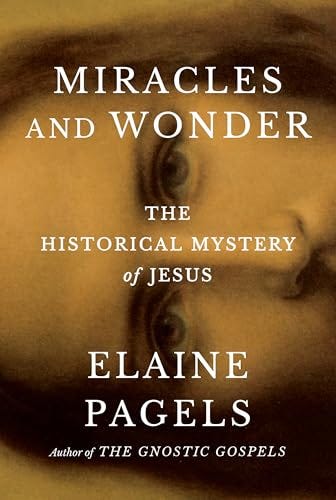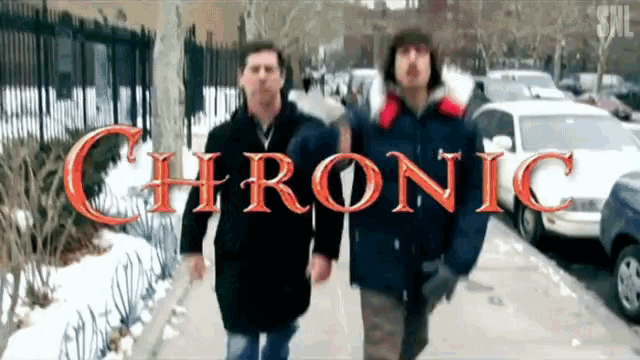Four loosely connected riffs on things that the Hebrew people have done better than Christians, and lessons we could take from them today…
#1 Taking the Fun out of Fundamentalism
A couple of summers ago in Aspen, I had the great pleasure of hosting a fireside chat with one of my all-time academic heroes, Princeton scholar, and National Book Award winner Elaine Pagels.
We got to riff on her entire body of work translating the Nag Hammadi scrolls and the Gnostic Gospels, her youthful friendship with Grateful Dead guitarist Jerry Garcia, and her own relationship to gnostic, lysergic initiation within and beyond the Christian fold.
I shared with her a riff from my last book of “the Jesus Meme”–the notion that the idea of Jesus–god, man, myth, and meme–is worthy of a considered reckoning, regardless of where we personally come down on the historical truth of it all.
Any idea that has persisted for over two thousand years and shaped so much culture and history seems worthy of a thorough assessment, on those merits alone.
It was interesting timing, as Elaine shared she was formulating the thesis for her next (and possibly last) book.
As it turns out, she chose to devote her vast scholarship and insights to tackling exactly that question–what is the Jesus Meme, and how has it shown up across the ages, from first century writers of the gospels, all the way to filmmakers and artists today.
So, when her new book Miracles and Wonder finally dropped last month, I read it cover to cover in a few days. (it’s great, and if you’re remotely interested in this sort of thing, worth a summertime read).
And it got me thinking.
One of the cooler arguments that Elaine makes is that there’s a simple progression in storytelling and truth claims unfolding from the oldest gospel to the newest.
Mark, the first one to get pen to parchment, laid it out short and sweet.
Light on Sunday school fables and fabulous claims, long on the three public years of Jesus’ life and teaching.
Matthew and Luke then embellished considerably on Mark’s original.
They were fighting rearguard actions and defending against critics of the first version who weren’t taking Mark’s testimony as “gospel truth” (including the sick burn that JC was a bastard nobody and that a Roman centurion named Pantera was his baby daddy!).
#sacrebleu
So over the course of the writing of the Big Four Gospels Jesus got less and less human and more and more destined.
By the time we get to the last one, John, who’s writing a literal lifetime after JC snuffed it, things have become downright mythic.
Jesus is now destined and divine.
Not just a carpenter from Nazareth, but a prophesied messiah from the House of David.
Not just a wise rabbi like Hillel, but an outright miracle worker who could beat the pagan gods at their own game.
Not just a dude made good, but divinity incarnate and infallible.
Not just Son of Man, but Son of God.
Somehow, that’s what’s trickled down to Christianity today.
It’s as if the person furthest down the line in a Game of Telephone then became the Rosetta Stone for all versions to come.
No wonder we’re lost in translation.
Even good ol’ Chronicles of Narnia Oxford don, C.S. Lewis got swept up in the hype.
(What?!?)
“Christianity makes one very clear and outrageous claim, that Jesus of Nazareth was the only Son of God, who died for our sins, was resurrected, and saved humanity with his blood, and this is the One Crucial Fact of All Time.”
But is it tho?
Pagels suggests that might be a little overwrought and not supported by a close reading of the texts and the times.
Besides, does belief, reverence, humility, awe, service, compassion, connection–really, any of the qualities that one might hope from living a religious life–are they predicated on swallowing that One Crucial Fact?
As Kurt Andersen argues in his excellent Fantasyland: 500 years of How America Went Haywire, it didn’t have to be this way.
In fact, for the few centuries after the Reformation, things had been going lumpily but steadily towards a science-friendly, secular adaptive, non-literal interpretation of the Word.
In other words, Christianity had grown with its times, and was part of a complex cultural evolution involving markets, electoral politics, and global connections.
#MaxWeberFTW
But all of that came undone in the late 19th/early 20th century, with a backlash retrenchment towards literal belief and outright superstition in the Reconstruction South.
The Defeated Dixies rejected Mainline Protestantism because it reeked of the Northern establishment. So they rewound the clock to a pre-Reformation fundamentalism.
Jesus whispers to me on the daily if I will only listen closely enough.
Devils and demons abound (and can be cast out in the most dramatic of fashions)
Abraham and Moses lived to be five hundred years old.
Dinosaur bones were put there by Satan to tempt us into Darwinian delusions.
The Earth was created in six days, six thousand years ago.
#facts
It’s a hop and a skip from there to QAnon.
And Plandemic.
And an election-insurrection that simultaneously was/wasn’t a psyop?
#schroedingersrebellion
***
These newly fervent fundamentalists flogged their fever dream as sober fact.
But in reality, this kind of blind faith was a new mutation getting peddled as the Way Things Always Were.
There have been (and still are!) plenty of deeply thoughtful, rigorous, ethical Christians who believe exactly none of these “outrageous facts.”
(See Fathers Thomas Merton and Keating, Brother David Steindl-Rast and countless others, old and new).
But weirdly, to be a full in-good-faith Christian these days you’re largely expected to sign off on the tallest of these tall tales and Gospel John’s version of how this all went down.
It’s Bananas!
Nevermind the Nag Hammadi gospels like Thomas and Magdalene that speak of internal mystical transformations and the secret path to living a Christed life.
Let’s just stick with the four canonical gospels themselves.
They show a clear progression of thinking, have lots of contradictions and are far less settled in fact than they are in our memories. (as Pagels suggests in Miracles and Wonder).
You’re not robbed of your faith by doing this. You’re rewarded with a deeper more nuanced version of it.
Think how much broader our consideration of the Nazarene and the church founded in his name would be!
Imagine how much kinder and gentler we might be towards each other, if we held our founding mythologies and tribal identities just a little more loosely.
And that’s the first thing that I think those old desert Hebrews really nailed that contemporary Christians and New Age seekers both could learn from.
Rather than spinning up some fantastical and fundamental image of divinity, and claiming infallible and literal interpretation of its message for a select few gatekeepers
–rather than that, why not just let the Mystery stay the Mystery?
The Jews knew.
That’s why they tell the story of Moses and the Burning Bush—always burning with holy fire, but never consuming itself. Best to look away even as its heat blasts your face.
So too, the Ark of the Covenant in the Holy of Holies. So awesome that to look directly upon its contents would melt you, Indiana Jones Style.
And finally the Tetragrammaton—the Fourfold Name of G_D. The four letters that represent a now forgotten, and never spoken Holy Name.
So that’s it. The Hebrews didn’t commit the fundamentalist error of taking things literally that were only ever meant to be taken seriously.
Or mystically.
Or at the very least, metaphorically.
Let the Mystery stay the Mystery.
I mean, doesn’t awe feel a whole lot better than smug?
#2: Restoring the Feminine to Where She Belongs
If you ever went to Sunday School and wrestled with the whole Holy Trinity Thing, you know it’s a tricky fucker to pin down.
For those of you who have forgotten your Latin, or never learned any in the first place, check the image below.
Pater at the top–Big Sky Daddy.
Filius on the left—The Son
Spiritus Sanctus to the right-The Holy Ghost
Non Est connecting all three around the outside of the horn? Is Not
Meaning, in a Jesuity via negativa kinda way, that the Father isn’t the same as the Son who isn’t the same as the Holy Spirit who isn’t the same as the Father.
BUT! (But But!!!)
They are all Deus in the middle–God.
But not the same.
Clear as mud?
Good! You can join two thousand years and billions of devout Christians who’ve tried to grok that shit for ages.
I mean Yahweh as AllFather? got it.
He features bigly in the Old Testament.
His absence is felt acutely in the New T when his beleaguered Son calls out to him in the Garden of Gethsemane and from the cross and gets nothing but crickets.
#deadbeatdad
The Son? Solid. Whole GodSpell story hinges on his life and message.
But the Holy Spirit? Some weird, sexless, Casper the Ghost version of the other two, who’s both same/different and insists on those infuriating pronouns (He/They)?
It never needed to be this complicated, or abstruse.
Because back in the original Hebrew the word for the Holy Spirit was ruach. Which is feminine!
Then it got translated into Greek and became pneuma. Which is neuter.
And finally, it hopped over to Latin and became spiritus. Which is masculine.
“Every translation is an act of betrayal!”
So instead of having to perform all of these theological backbends of who the Holy Ghost is and isn’t and how it connects to the other two, we have a much simpler and more obvious trinity to contemplate.
Father
Son
Undetermined But Distinctly Feminine Third leg of the stool?
Seems like we’ve got a couple options here.
a) Could be Jesus’ fraternal twin sister Yeshuella
or
or?
maybe, just maybe, his mother?
Father
Mother
Child
Wouldn’t that kinda make sense?
And then we get to the geometry of it all.
The standard Holy Trinity that we looked at above puts the AllFather at the pointy top.
#patriarchy
Son and Ghost hold down the corners. Popes, bishops and priests clean up on the ground.
But now that we’ve restored the Father-Mother-Son dynamic, does that still work?
Daddy on top.
Mom and Son in support?
Seems a little clunky (and kinda Freudian)
Wouldn’t it make more sense to flip this thing upside down, and acknowledge the obvious dyad—the union of the parents?
Then the Christ, the child, the natural result of that sacred union of masculine and feminine–instantly intelligible to all, and reflecting the order of human families everywhere…
Would give us something that looked a little more like this:
How’s them apples?
No need to do some New Agey revisionism to “restore the Sacred Feminine.”
Or deconstruct the patriarchy.
And bonus points: take a look at this version of the Holy Trinity, and ask yourself who do you see? Actually, this image is Apollo the Sun god, Artemis, his sacred twin and moon goddess and the child Dionysus (who’s water to wine miracles Jesus poached for his magickal debut at the wedding).
Turns out, in its earliest incarnations, the Holy Trinity made a whole lot more sense. In both the Hellenic and Hebraic worlds. And all it took was a little etymological sleuthing to uncover the original gender of that sexy ghost.
No pussy hats or running with wolves required!
Like I said, the Jews knew.
Part Two coming next week where we unpack the Unholy Origins of Biohacking and the genius of the Jewish Midrash…











I love these explorations, thank you Jamie. I know this stuff is deeply triggering for some, especially now, but fk it feels good to air this sht out!
I survived a coma at the end of 2015, was in the hospital for a long minute. Had some intense “spiritual” experiences (blech that word, ime it’s all just life/nature) and when I got home, had this song on repeat. Must have listened to it hundreds of times?
https://youtu.be/0gQVS2fCsek
I didn’t have the bandwidth to analyze and otherwise pathologize my experiences, plus I had a brain injury.
I’m now a student/initiate in a tradition, and this song is still my jam.
Yeshua was showing, not telling, a path of beauty. It was the life of a traditional healer, similar to many other cultures’ healing traditions. But there are billions of people now who would rather destroy themselves, and all the rest of life, to defend their wonky interpretation of the guy and his life. My fav traditions are the ones that start with, from the jump, awareness and acceptance of how ridiculous our species is. ❤️
I’m wrestling with this stuff on a daily basis and loved this post. Thanks for continuing to share thoughtful and useful commentary, Jamie. Your writing and the Homegrown Humans community have been really helpful to me for the past several years. Thanks!